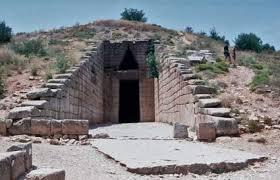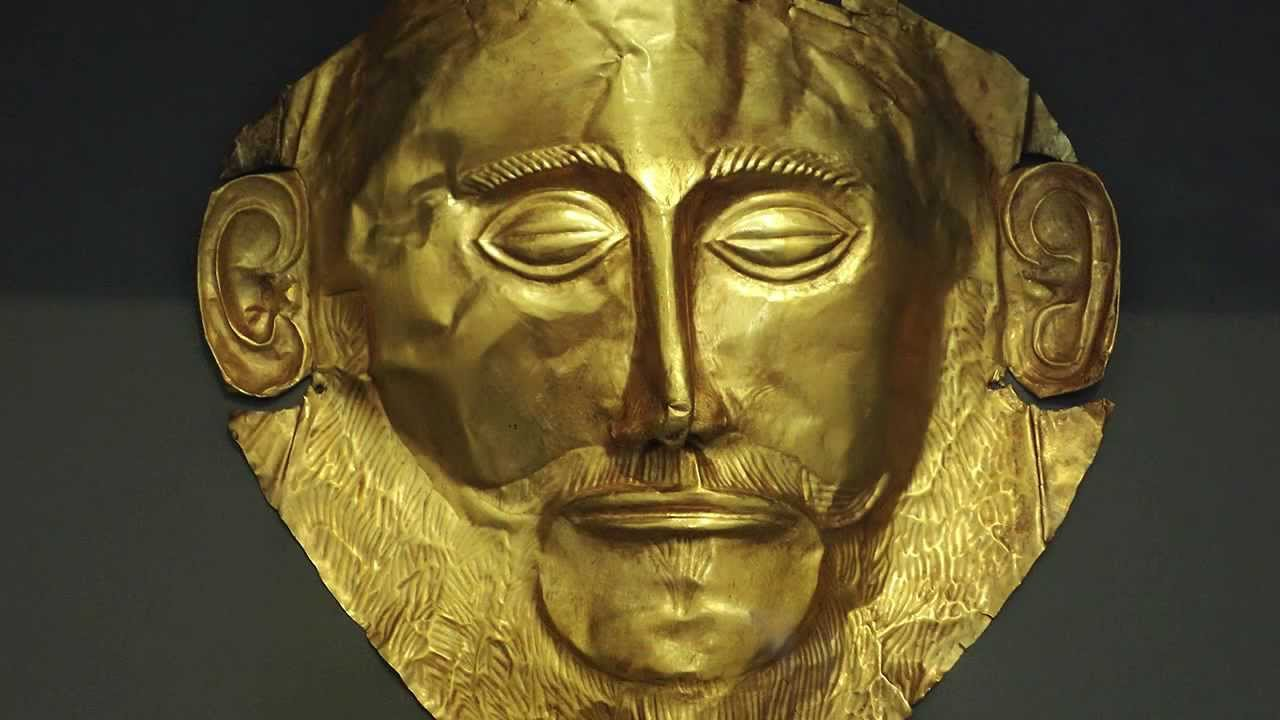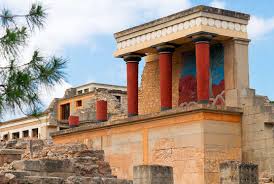Minoans and Mycenaeans
1/66
Earn XP
Description and Tags
CLA2100
Name | Mastery | Learn | Test | Matching | Spaced |
|---|
No study sessions yet.
67 Terms
One of the most successful ‘Greek’ civilizations
Minoans
The Minoans developed in…
Crete
Crete
biggest island in modern day Greece
Why did the Minoans develop on an island?
it was on the coast so they had access to fishing and trade by sea
When was there stability in Crete for the Minoans?
2000 BCE
What writing is associated with the Minoans?
Linear A
Who coined/found Linear A and B?
Sir Robert Evans
Linear A
still unsure, possibly trade
Linear B
trading and value equivalencies (currency but with item trading)
Minoan palaces included…
Phaistos, Mallia, Zakros, and Knossos
What was the palace of Knossos?
A Minoan palace; political and administrative center; maze of rooms
Europe’s oldest city is…
Knossos
Religious symbols of the Minoans are…
griffins, marine life, crops/plants, bull horns
Which of the Minoan palaces had running water, waste disposal, and was overall very advanced?
Knossos
What are the dates of the Knossos palace?
1700 to 1375 BCE
Megaron
large room within a palace with numerous uses; had a porch; usually used for religious purposes
The Minoans had a close association with _____ and ______
Egypt, Levant; shown in Knossos and Tell El-Daba
Minoans’ religious god was a…
goddess of snakes; represented fertility; snakes in her hands
Important Minoan religious symbols included ____ and ____
Bull horns and double axe
Minoans’ sacred animal
bull
What date was there disruption for the Minoans?
2,200 BCE
When was there a connection between the Minoans and the beginnings of the Myceneans?
2,000 BCE; Minoans started trading relations with southern and central Greece
Circle A
grave site; local artifacts; mask of Agamemnon
What were the dates of Circle A
1700 to 1500 BCE
Circle B
local and imported goods; evidence of trade and migration
What were the dates of Circle B
1600 to a bit after 1500 BCE
How were men buried?
as warriors; families competed for after-death glory
How were women buried?
with elaborate jewelry and silver drinking cups
Who excavated the Mycenaean graves?
Heinrich Schliemann; he gave the jewelry to his wife
Where was the Griffin Warrior Tomb?
Pylos
What was the Griffin Warrior Tomb?
1400+ found objects; 75% came from the Minoans; a Mycenaean with a love for Minoans, or a Minoan who died here
What were the dates of the Griffin Warrior Tomb?
1500 to 1450 BCE
What was the Tholos Tomb?
large stone chambers shaped like beehives cut into the hill; Mycenaean tombs
What was another name for the Tholos Tomb
Tomb of Agamemnon
What was the writing associated with the Mycenaeans?
Linear B; was in Greek
Where were 600 Linear B tablets found?
Pylos; tablets were bakes when the palace burned down
Who deciphered Linear B?
Michael Ventris
What was the language of the Mycenaens?
Greek
When were the Mycenaean years of glory?
1400 to 1200 BCE (late bronze age)
When were the Mycenaeans ruling Crete?
15th century
What was the name of the famous Mycenaean palace?
Lion Gate
What was the year of Lion Gate?
1250 BCE
Describe Lion Gate
architecture follows Minoan style, smaller and less well built than Minoan, complex road systems/draining systems, Megaron was the focus of the palace
Who could the Trojan war have possibly been between?
Hittites and Ahhiyawa
What was the Tawagalawa Letter
references to land called Ahhiyawa
Wanaka
King
What was another name for Pylos?
Palace of Nestor
Who discovered Pylos?
Carl Blegen
What was Pylos?
Mycenaean palace; divided into 2 provinces; eventually burned down, preserving Linear B tablets
Damos
the people
Lawagetas
2nd authority under the king (Wanaka)
When did Minoan palaces burn down?
1450
What were the jobs of slave women and children?
grinders of grain, bath attendants, weavers
Mycenaean religion
non-existent before 1600 BCE; symbols of snakes, birds, bulls horns and double axes; several deities
Potnia
lady mistress’ Mother, Goddess
Mycenean armor
helmets of bronze and boars tusks; bronze chest plates; bronzes greaves; they had the technology to get bronze to fit the human body
What was the end of the Myceneans?
1200 BCE palaces were destroyed by fire'; migration away from many places
What city did not burn down in 1200 BCE?
Athens
Marauders
sea people
Who were “The Sea Peoples” led by?
Libyans (Egypt)
When did Cretans develop pictographic writinf?
1900 BCE
Villas
exemplified lower tier elite families; majority worked and lived in small towns in Crete
Which graves showed extraordinary riches?
shaft graves
What was stone masonry called and why?
Cyclopean because the Greeks believed that only a Cyclops could move the massive stones

Tholos Tomb

Mask of Agamemnon

Knossos